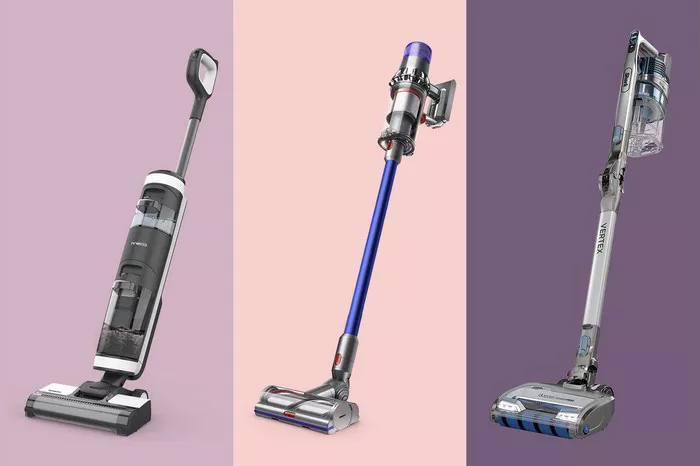Nowadays, vacuum cleaners are a necessary appliance in every home, improving convenience and effectiveness of cleaning. When buying, using, and maintaining these gadgets, people may make more educated judgments if they are aware of how they operate. We’ll examine the parts, uses, and many varieties of vacuum cleaners as we dig into their mechanics in this article.
Introduction to Vacuum Cleaners
Vacuum cleaners operate on the principle of creating suction to lift dirt, dust, and debris from surfaces. They use a combination of airflow and agitation to dislodge particles and direct them into a containment chamber for disposal. The basic components of a vacuum cleaner include a motor, fan, filter, suction nozzle, and dustbin or bag.
1. Suction Power and Motor
At the heart of every vacuum cleaner is an electric motor that drives the suction mechanism. When the vacuum is turned on, the motor generates suction by creating a pressure difference between the inside of the vacuum and the surrounding air. This pressure gradient causes air to rush into the vacuum, carrying along with it any debris in its path.
The power of the motor determines the strength of the suction. Higher wattage motors typically produce more suction power, enabling the vacuum cleaner to pick up larger particles and clean more effectively. However, suction power alone doesn’t guarantee efficient cleaning; other factors such as airflow and filtration also play crucial roles.
2. Airflow and Agitation
In addition to suction power, airflow is vital for effective cleaning. As air is drawn into the vacuum cleaner, it passes through various channels and filters before reaching the suction nozzle. Along the way, the airflow may encounter obstacles such as brushes or rotating beaters that agitate the surface being cleaned, loosening dirt and debris for easier removal.
Agitation is particularly important when cleaning carpets and rugs, where dirt and dust can become embedded in the fibers. The rotating brushes or beaters help to dislodge these particles, allowing the suction to lift them away effectively. For hard floors, vacuum cleaners may utilize different attachments or settings to optimize cleaning without causing damage.
3. Filtration Systems
Once the airflow has picked up dirt and debris, it passes through a series of filters designed to trap particles and prevent them from re-entering the surrounding air. The primary filter, often a foam or fabric material, captures larger particles, while finer particles are trapped by secondary filters such as HEPA (High-Efficiency Particulate Air) filters.
HEPA filters are especially effective at capturing microscopic particles like allergens, dust mites, and pet dander, making them essential for households with allergy sufferers or respiratory issues. Some vacuum cleaners also feature additional filtration stages, such as cyclonic separation, which uses centrifugal force to separate dust and debris from the airflow.
4. Suction Nozzle and Accessories
The suction nozzle is the part of the vacuum cleaner that comes into direct contact with the surface being cleaned. It may feature various designs and attachments depending on the type of flooring or the specific cleaning task. For example, wide nozzles are suitable for large areas, while narrow crevice tools are ideal for reaching tight spaces.
Additionally, vacuum cleaners may come with specialized attachments for specific purposes, such as upholstery brushes, pet hair removers, or extension wands for cleaning high ceilings or drapes. These accessories enhance the versatility of the vacuum cleaner, allowing users to tackle a wide range of cleaning challenges with ease.
5. Dust Collection Systems
As the airflow passes through the filters and suction nozzle, it carries dirt and debris into a dustbin or collection bag for disposal. Bagged vacuum cleaners use disposable bags to contain the debris, while bagless models utilize dustbins that can be emptied and reused. Both systems have their advantages and drawbacks, depending on personal preference and convenience.
Bagged vacuum cleaners tend to retain dust and allergens more effectively, as the sealed bags prevent particles from escaping during disposal. However, replacing the bags can incur additional costs over time. Bagless vacuum cleaners offer the convenience of emptying the dustbin without the need for replacement bags, but they may release more dust into the air during disposal.
Maintenance and Care
Proper maintenance is essential to ensure the longevity and performance of your vacuum cleaner. Regular cleaning of filters, dustbins, and brushes helps prevent clogs and maintains optimal suction power. Check manufacturer guidelines for specific maintenance instructions and recommended replacement intervals for filters and other components.
Inspect the suction nozzle and attachments for any obstructions or damage, and clean them thoroughly after each use to prevent dirt buildup. If your vacuum cleaner experiences any issues or loss of suction, troubleshoot the problem by checking for blockages, damaged components, or worn-out parts that may need replacement.
Conclusion
Understanding the inner workings of vacuum cleaners can empower users to make informed decisions when selecting, using, and maintaining these essential cleaning tools. By considering factors such as suction power, airflow, filtration, and accessories, you can choose a vacuum cleaner that best suits your cleaning needs and preferences. With proper care and maintenance, your vacuum cleaner can continue to deliver efficient and effective cleaning performance for years to come.

